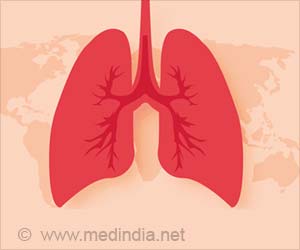Washington, Aug 18 (ANI): Scientists from University of Pennsylvania have shed light on how lungs are developed in the body.
They have identified a tissue-repair-and-regeneration pathway in the human body, including wound healing that is essential for the early lung to develop properly.The researchers have also discovered two molecules in this pathway, Wnt2 and Wnt2b that play a key role in early lung development.
"We wanted to know the answer to a seemingly simple question: What is required to generate the lung in mammals?" said senior author Dr Edward Morrisey, Associate Professor of Medicine and Cell and Developmental Biology at the University of Pennsylvania School of Medicine.
"Wnt molecules are important for lung growth and we think that some of the molecules in the Wnt pathway are needed to specify lung progenitor cells and if not enough cells are 'told' to make a lung, an animal develops a faulty, smaller organ or even no lung," he added.
Understanding how a lung develops is important in treating or preventing a host of lung and pulmonary diseases in children.
In the developing embryo, the lung, pancreas, liver, thyroid, and stomach all come from the foregut region, which starts out looking like a long tube.
Advertisement
The team focused on the Wnt pathway to see where and when Wnt molecules were expressed along the foregut tube, even before the lung starts to become a recognizable organ.
Advertisement
Morrisey surmised that Wnt2 and Wnt2b were required to specify the early progenitors for the lung in the foregut.
The Morrisey lab showed that activation of the Wnt pathway resulted in formation of lung progenitors in both the esophagus and stomach where they are normally excluded.
"The ability of Wnt to program esophagus and stomach endoderm to a lung fate points to the critical role this pathway plays in lung development and suggests the possible use of Wnt in generating lung epithelium from non-lung sources," said Morrisey.
The findings are described this week in Developmental Cell.
Source-ANI
SAV









